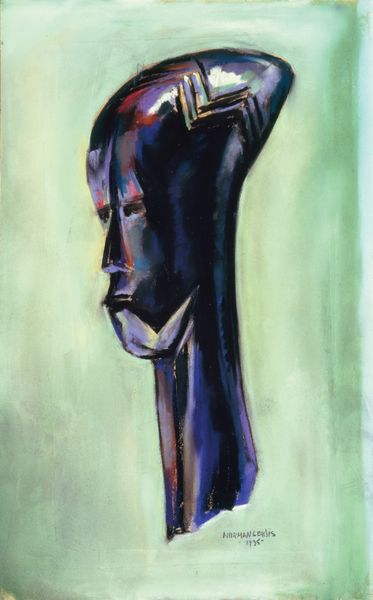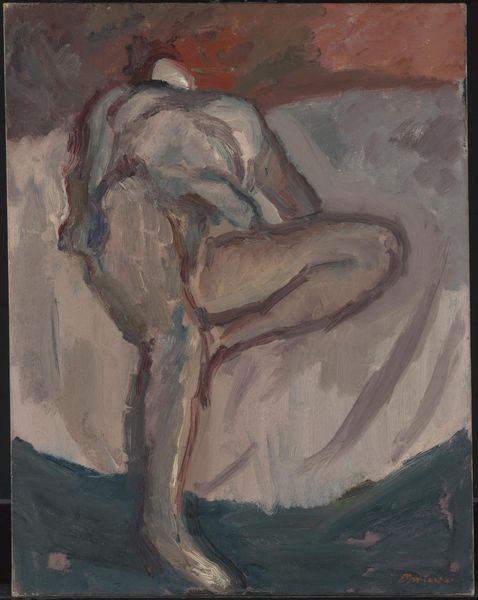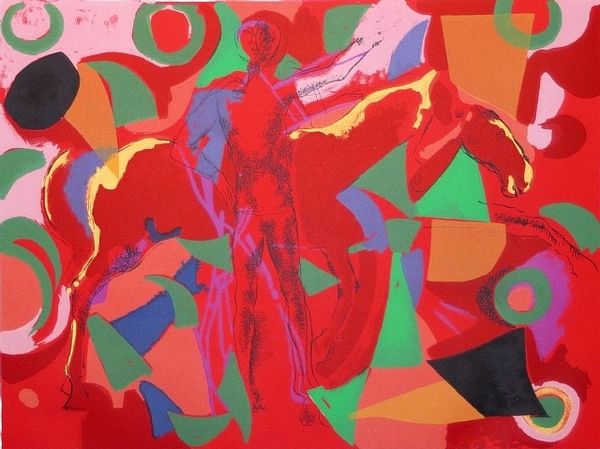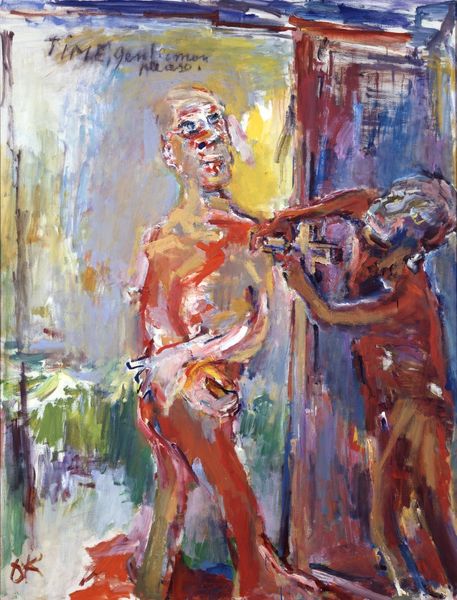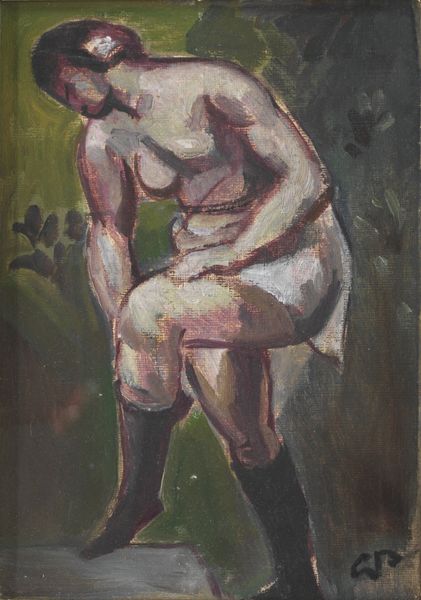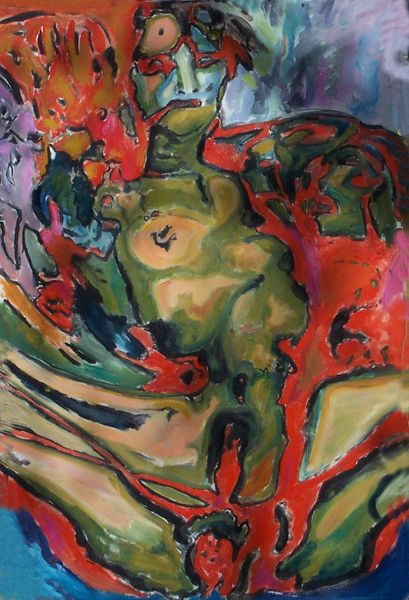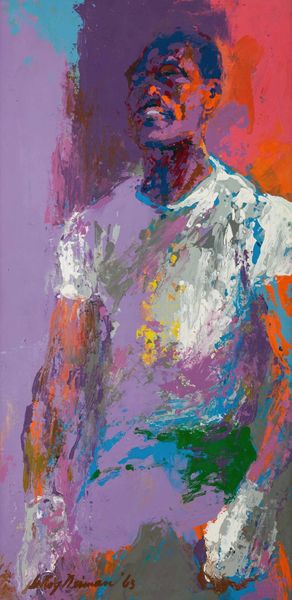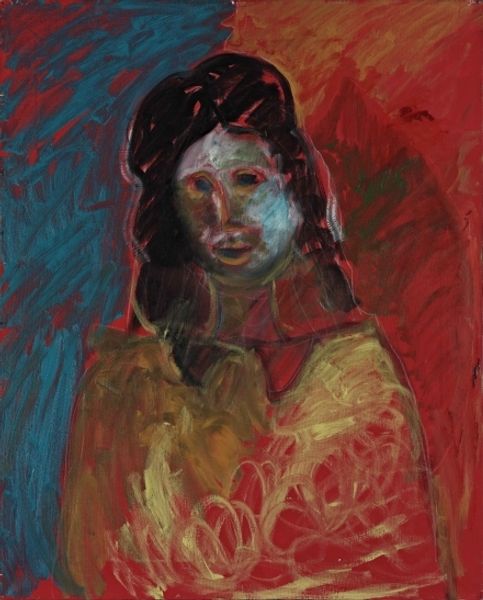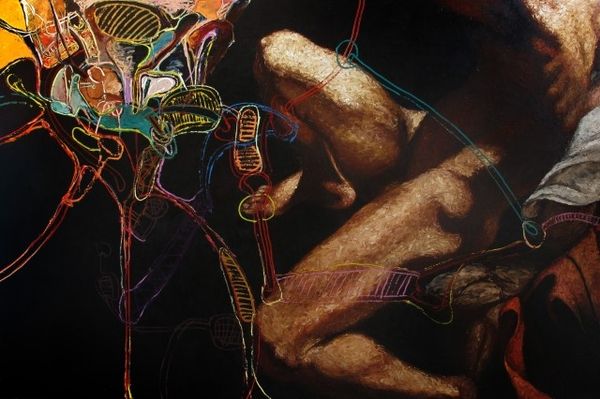
painting, oil-paint
#
portrait
#
contemporary
#
abstract painting
#
painting
#
oil-paint
#
figuration
#
oil painting
#
portrait drawing
#
portrait art
Copyright: Carlos Almaraz,Fair Use
Editor: So, we’re looking at Carlos Almaraz’s "Naked Jester" from 1988, painted in oil. It’s striking, almost confrontational. There’s this rawness to the figure and the heavy brushstrokes. What strikes you when you look at this piece? Curator: Well, immediately I think about Almaraz's position in the Chicano art movement. This "Naked Jester" deviates quite a bit. His earlier work was often overtly political, focused on social justice issues and Chicano identity in Los Angeles. Do you see any remnants of those earlier concerns here? Editor: Maybe a sense of vulnerability? The jester is typically a figure of entertainment, of satire, but stripping him bare changes the narrative completely. Curator: Precisely. By deconstructing that figure, Almaraz may be commenting on the performance of identity, the roles we play, and how society, or the art world specifically, expects certain performances from artists of color. The jester, unclothed, powerless. It also suggests a break from prescribed artistic roles and expected themes of identity. What do you make of the almost theatrical backdrop? Editor: It feels like a stage, and he’s exposed on it, vulnerable. Like he’s critiquing the whole concept of spectacle. Curator: That’s an important insight. Given that this work was created during the AIDS crisis, can we interpret the work through that context as well? Does it point to wider themes concerning societal vulnerabilities, the questioning of authority, perhaps? Editor: Absolutely. It makes me see the painting as a statement about societal roles and vulnerabilities during a difficult historical period. Thanks for pointing that out! Curator: And you’ve helped me consider how it directly challenged conventions and expectations of art.
Comments
No comments
Be the first to comment and join the conversation on the ultimate creative platform.
